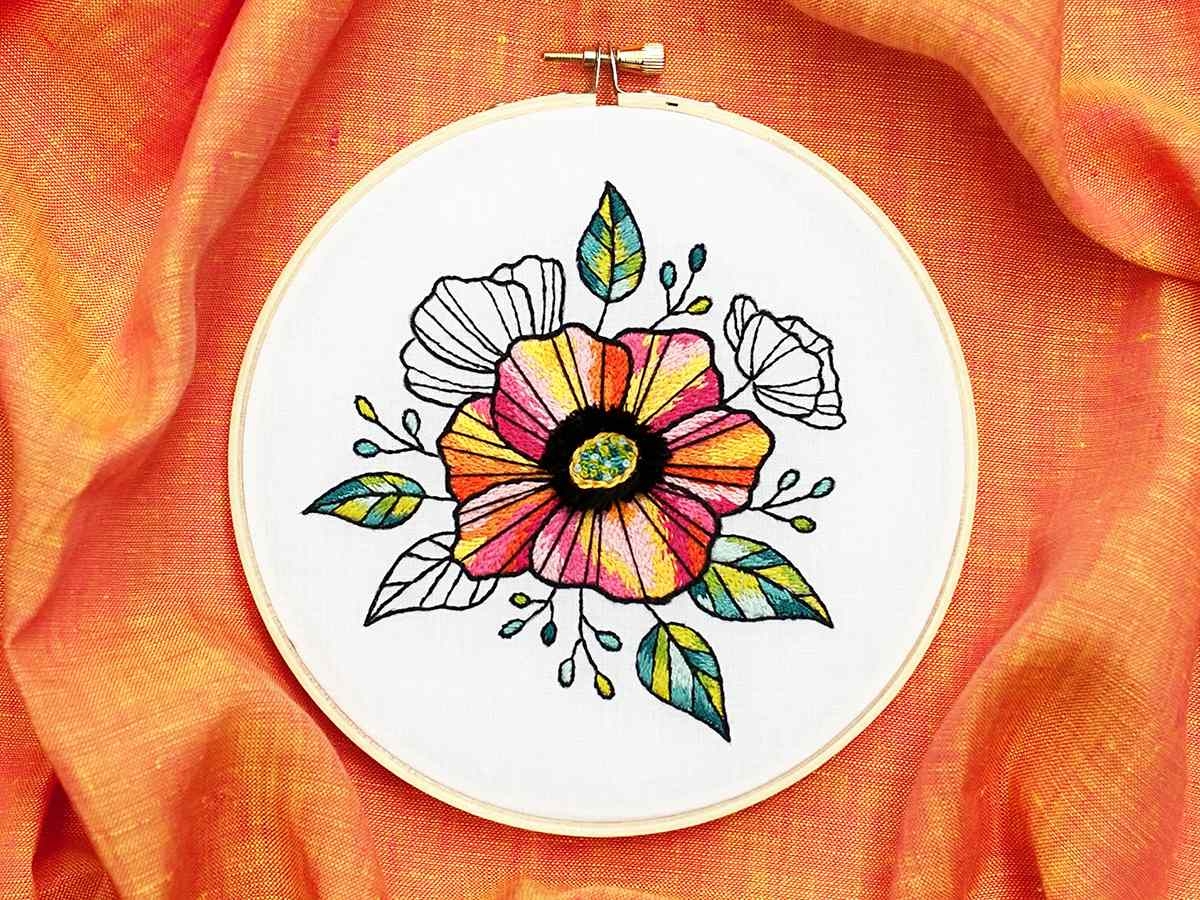Embroidery, with its rich history and intricate designs, stands as a testament to human creativity and craftsmanship. From ancient civilizations to modern times, this timeless craft has adorned textiles, garments, and art pieces, weaving its way through cultures and generations. In this comprehensive guide, we embark on a journey to explore the fascinating world of embroidery, delving into its origins, techniques, and enduring allure.
Unraveling the Threads of History:
Embroidery traces its origins back to ancient civilizations, where it served as a form of embellishment, communication, and artistic expression. Over the centuries, embroidery has evolved and adapted, reflecting the cultural influences and technological advancements of each era.
Early Origins:
The origins of embroidery can be traced back to ancient civilizations such as Mesopotamia, China, and Egypt, where intricate needlework was used to decorate clothing, accessories, and ceremonial items.
Early embroidery techniques included basic stitches such as running stitch, satin stitch, and chain stitch, which were often combined to create elaborate designs.
Medieval Masterpieces:
During the Middle Ages, embroidery flourished in Europe, with intricate designs adorning garments, tapestries, and religious artifacts.
The rise of guilds and workshops led to the development of specialized techniques and styles, with embroidery becoming a highly prized skill among artisans and nobility.
Renaissance Revival:
The Renaissance period witnessed a revival of interest in the arts, including embroidery, which saw a resurgence in popularity among the aristocracy and royalty.
Elaborate designs featuring intricate patterns, motifs, and embellishments became symbols of wealth, status, and sophistication.
The Art and Craft of Embroidery:
Embroidery is both an art form and a craft, requiring skill, patience, and creativity to master. From traditional hand embroidery to modern machine techniques, there are countless approaches to this versatile craft.
Hand Embroidery:
Hand embroidery is the oldest and most traditional form of embroidery, requiring nothing more than a needle, thread, and fabric.
Techniques such as satin stitch, cross-stitch, and crewelwork are commonly used in hand embroidery, allowing artisans to create intricate designs with precision and detail.
Machine Embroidery:
Machine embroidery, which utilizes computerized sewing machines, offers a faster and more efficient alternative to hand embroidery.
Computerized designs are programmed into the machine, which then stitches the pattern onto the fabric automatically, allowing for greater consistency and accuracy.
Specialty Techniques:
Beyond traditional hand and machine embroidery, there are numerous specialty techniques and styles that artisans may explore.
Techniques such as stumpwork, goldwork, and stumpwork push the boundaries of traditional embroidery, incorporating three-dimensional elements, metallic threads, and embellishments to create stunning effects.
The Enduring Allure of Embroidery:
In an age of mass production and digital technology, embroidery continues to captivate and inspire, offering a timeless appeal that transcends trends and fashions.
Artistic Expression:
Embroidery is a form of artistic expression, allowing individuals to showcase their creativity, skill, and imagination.
From intricate floral motifs to abstract designs, embroidery offers endless possibilities for self-expression and personalization.
Cultural Heritage:
Embroidery is deeply rooted in cultural heritage, with each region and community contributing its own unique techniques, motifs, and styles.
By preserving and passing down traditional embroidery techniques, artisans honor their cultural heritage and keep centuries-old traditions alive.
Fashion and Design:
Embroidery plays a significant role in the world of fashion and design, adding texture, dimension, and visual interest to garments, accessories, and home décor.
Designers often incorporate embroidery into their collections to create stunning statement pieces that stand out on the runway and in the marketplace.
Frequently Asked Questions (FAQs):
What materials are commonly used in embroidery?
Common materials used in embroidery include embroidery floss (thread), fabric (such as cotton, linen, or silk), embroidery hoops, needles, and embellishments like beads and sequins.
Is embroidery difficult to learn?
While embroidery requires practice and patience, it is accessible to beginners and can be learned through tutorials, books, and classes. Starting with simple stitches and projects is a great way to build confidence and skill.
Can embroidery be used for practical purposes?
Yes, embroidery can be both decorative and practical. In addition to embellishing garments and accessories, embroidery can be used to mend and repair textiles, personalize household items, and create custom gifts.
Are there different styles of embroidery?
Yes, there are countless styles and techniques of embroidery, each with its own unique characteristics and cultural influences. Some popular styles include cross-stitch, crewelwork, blackwork, and Japanese sashiko.
Conclusion:
Embroidery, with its rich history, intricate techniques, and enduring appeal, continues to captivate and inspire artisans and enthusiasts around the world. From ancient civilizations to modern times, this timeless craft has evolved and adapted, reflecting the cultural influences and artistic expressions of each era. Whether practiced as a hobby, a profession, or a form of artistic expression, embroidery holds a special place in the hearts of those who appreciate its beauty, craftsmanship, and versatility. As we celebrate the art and craft of embroidery, let us honor its legacy, explore its possibilities, and keep its traditions alive for generations to come.


